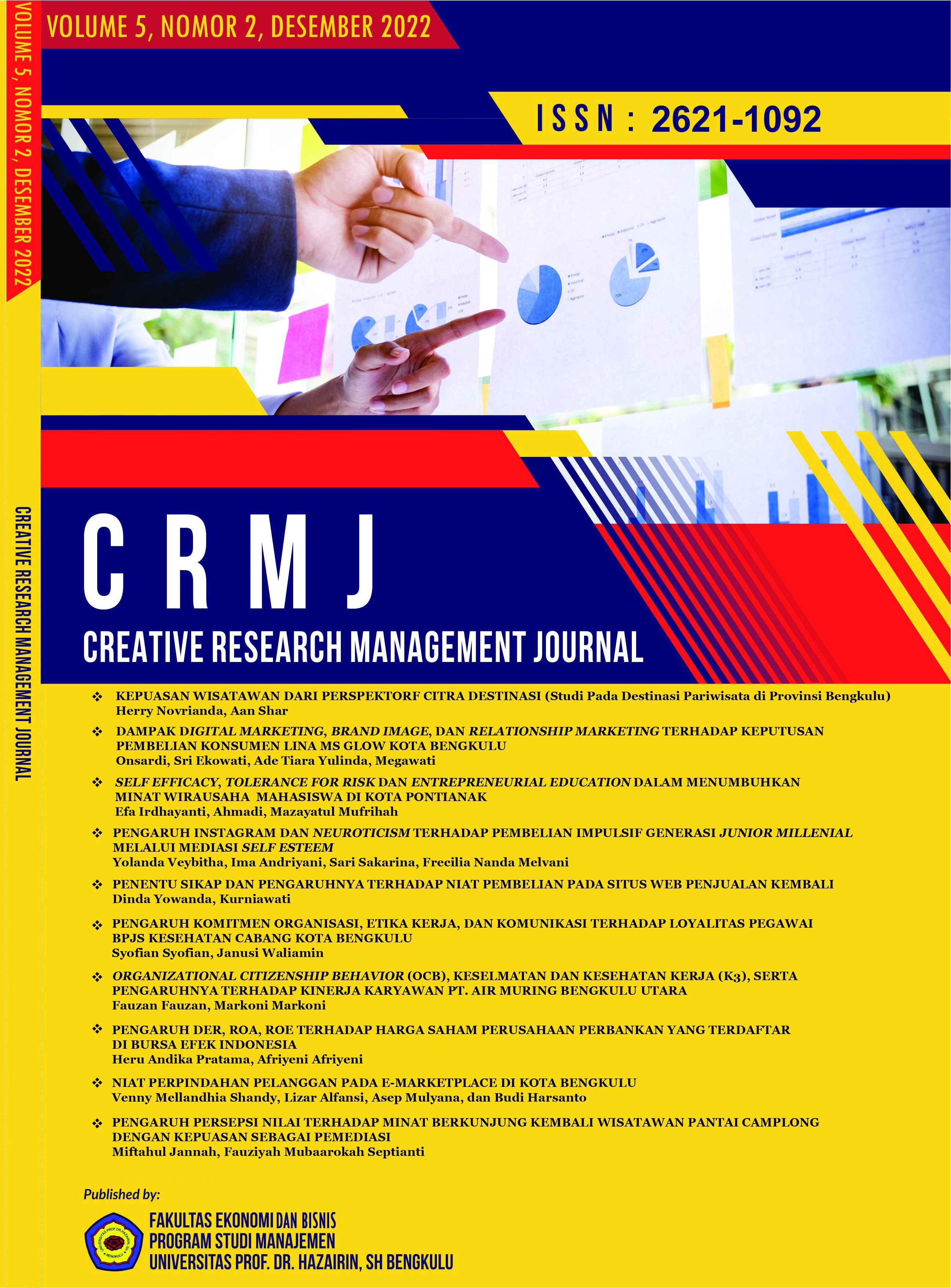NIAT PERPINDAHAN PELANGGAN PADA E-MARKETPLACE DI KOTA BENGKULU
DOI:
https://doi.org/10.32663/crmj.v5i2.3088Kata Kunci:
Price Fairness, Relationship Quality, Perceived Betrayal, Switching IntentionAbstrak
This study aims to examine and analyze whether there is an influence between price fairness, relationship quality, perceived betrayal on switching intentions. This research uses Partial Least Square Structural Equation Model (SEM PLS). The method used in this study is non-probability sampling. The population used in this study are consumers who have transacted in e-marketplaces and moved to other e-marketplaces in Bengkulu city and 353 samples were selected. The results showed that price fairness had a negative effect on the perception of betrayal, the quality of the relationship had a negative effect on the perception of betrayal, price fairness had a positive effect on the relationship, the perception of betrayal had a positive effect on switching intention, price fairness had a negative effect on switching intentions, and the quality of the relationship had no negative effect. on switching intentions. Even though the quality of the relationship with customers is good, customers can still intend to switch to other e-marketplaces. For further research, the authors suggest examining other factors that may influence the relationship, such as alternative product offerings, prices, promotions, discounts, and others so that this research will be more extensive.





